& Construction

Integrated BIM tools, including Revit, AutoCAD, and Civil 3D
& Manufacturing

Professional CAD/CAM tools built on Inventor and AutoCAD
19 min read
“Save & Quit” Hang
Starting with the most widespread of reports. Many users were finding that Fusion 360 would hang when selecting to “save and quit” after the last update. Not only did the software hang, but we left users hanging and wondering if the ‘save’ part happened. Not cool! The good news is that this has been resolved.
3D Spline Constraints
Those of you who experienced instability when adding tangency and other constraints to 3D splines needn’t worry any longer. Big thanks to @Josh.nelson for reporting this!
CAM Duplicate & Paste
CAM users may have noticed a crash when duplicating and pasting a pattern which contained drill operations to a new document. The fix is implemented, so continue duplication & pasting, and get those parts programmed faster!

Designed and rendered by Mohamad Al-Hakeem
Welcome to this installment of What’s New, brought to you by all the rad Autodeskers that helped make this update happen. The focus of the May 30th update is on improving your quality of life when it comes to using Fusion 360, and continuing to develop features that have the most impact on your workflows.
Jump to a topic or soak it all up!
[toc]
A couple updates ago, we implemented the ability to stop the timeline and certain computes if they are taking too long. We’ve continued to build out the code so that it covers more commands, and this time, you’ll be able to lay down the hammer on Shell and Fillet computes by pressing ESC if it’s taking too long to finish.
Previously the Replace Face tool only allowed you to replace a solid face with a surface face (Patch). Now you can replace a solid face with another solid face from a different body. This means any Brep face (or group of faces) can be the target, and the tool will work as long as the source face doesn’t reach beyond the target face(s).
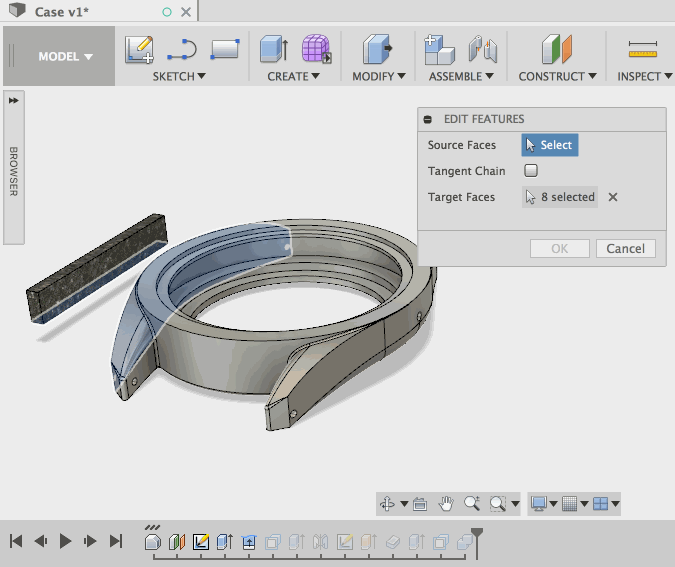
Upon inserting a mesh body, you’re given the manipulators to position the mesh, yet we had a Transform button in the command dialog that didn’t really provide any value. Now it has been removed from the dialog. If you need reposition your mesh body after the fact, you can always use the Move command at any time.
This update for Sketching is all about making constraints better. More consistent, more predictable, more stable.
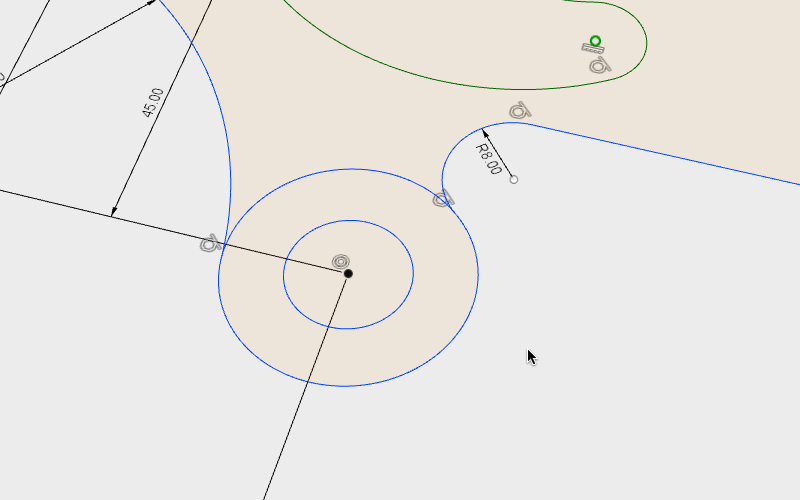
Yup. You’ll no longer see it in the Preview section of your preferences, because it is now baked into the sketching environment. If you’re not familiar with FCA, it basically means that when you have a sketch that is fully defined by dimensions and constraints, the sketch lines will change from its default blue color to black. This will also includes a number of fixes to how FCA works, as well improving overall constraints stability, performance and predictability.
Important note: when you edit an existing sketch that doesn’t yet have FCA coloring, Fusion 360 will compute FCA from scratch for that sketch, which may take a few seconds. Note that this is a one-off calculation per sketch, and once FCA information is present, further sketch edits will be back to normal.
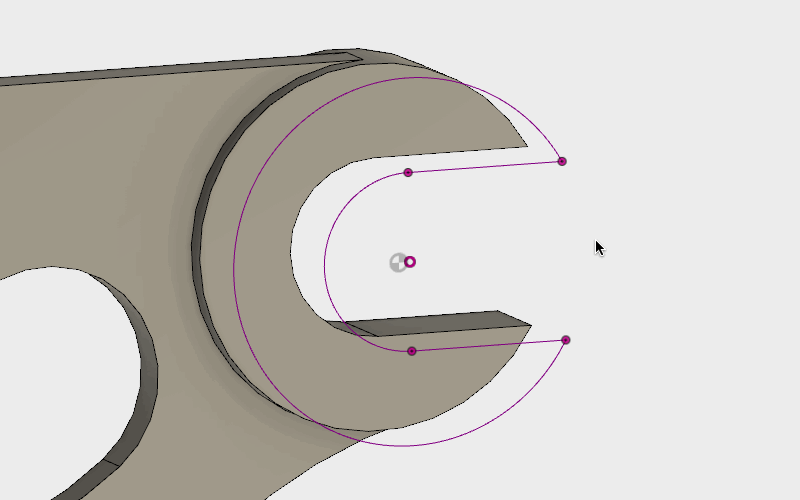
Coincident and Projected constraints in sketches previously didn’t have icons because we thought that showing icons for all of these constraints would add a lot of clutter to your sketches. However, their absence can make it difficult to know where these constraints exist, and how to delete them if needed.
Now when you hover over geometry that has these constraints applied, you will see their respective icons. Hovering over one of these icons will highlight the related geometry (e.g. hovering over a Projected icon will highlight the geometry that was originally projected from). Selecting one of these icons and hitting delete will remove the constraint.
Starting with this update, future updates will appear less intrusive and more behind-the-scenes, allowing you to focus more on what’s really important: your projects.

Next time you restart after we’ve pushed a product update, you’ll see a “1” next to the clock icon. (It’s pretty subtle, but that’s the idea.) Click it and you’ll see either the update happening in the background, or that it’s already landed, ready for you to take at your convenience.

Convenience – that’s what we’re striving for. Work through updates like they’re not even happening. If you’re not ready to take the update, you don’t have to. Continue to work until you’re ready to restart, then click on “Restart” and you’ll be up-to-date.
We’re making good progress on core data management tools mentioned in our recent roadmap post. Although this update doesn’t include any of those features within Fusion 360, our data and collaboration experience via web browser, Fusion Team, has some new goodies in store.
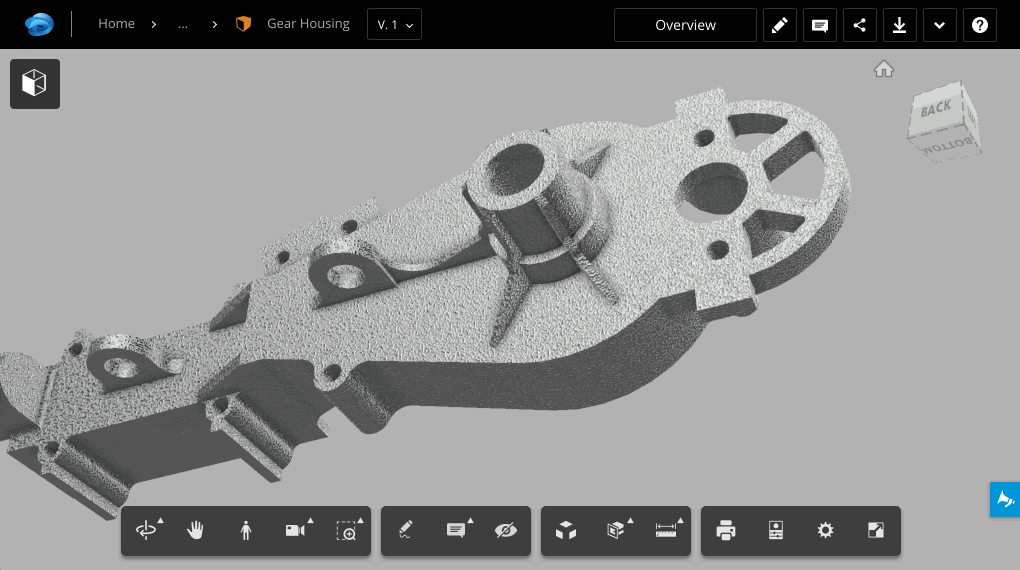
Previously if you were reviewing a model view through the web 3D viewer and wanted to mark up an area of the design for feedback, you only had access to one line tool (Arrow) and 5 types of area selections (Rectangle, Ellipse, Cloud, Custom Cloud, and Polygon). There are now a few more handy tool types for you to use.

The Arrow line tool got a new roommate: the Line tool. It’s like the Arrow tool, but without the arrow. There’s also a handy Style tool for you to tweak the color, thickness, and opacity of the line.
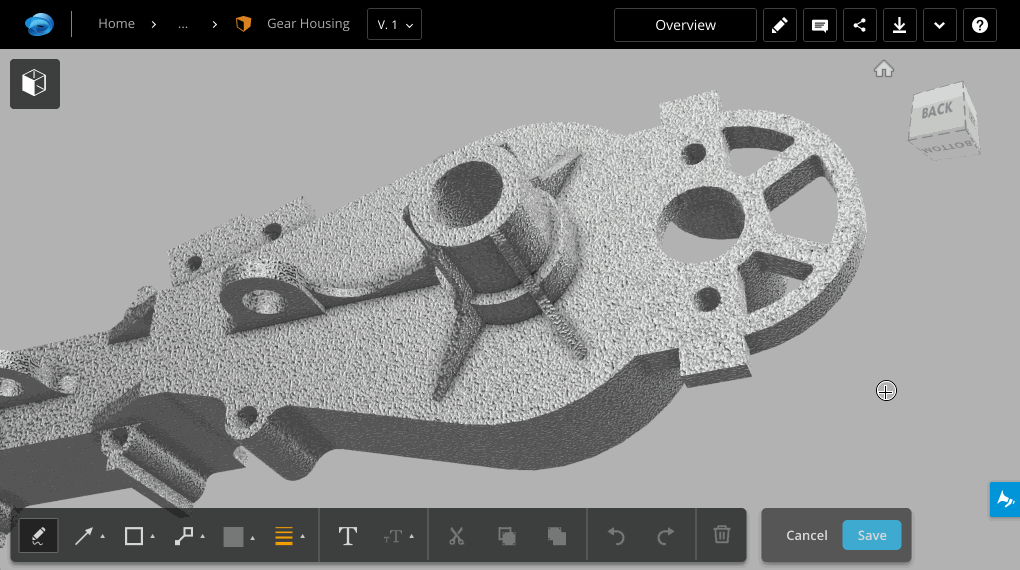
Next to the Area Selection tools, there are new Callout tools. This makes it easier for you to highlight an area and add notes to it, all one command.

Just like line styles, you can tweak the style of your callout box, background color, background opacity, as well as text style, color, and size.
Along with a couple of fixes, we’ve introduced a new command that enables transparent materials to work better with each other, resulting in more realistic renderings!

Water purifier model designed by Sergio Hernã¡ndez
It all started with this forum thread. Now when you’re in the Rendering workspace, you can right-click on a component and find an option called Dielectric Priority Control. Sounds fancy right? Well it kind of is.

Nested Dielectrics is a solution for generating more realistic renderings with models that contain refractive materials, especially when one is enclosed in another one. Think of ice cubes in a glass of water. Previously, transparent bodies would just disappear when they are overlapping each other. You’d have to make boolean cuts so that the tool body (ice) is “nested” within the target body (water) to get the right effect. Now you can model your designs as they exist in the real life, and modify the transparency priority of each body (or dielectrics) so that the refractions look on point.
Check out this blog post on the nitty gritty details and how to best use this feature tomorrow. Check back then to learn more
Meanwhile in Simulation, we’ve added new nonlinear advanced material models, and streamlined how results are shown, giving you more control over what’s most important to you.
We added 3 new advanced material models for Simulation: Temperature Dependent Isotropic, Elasto-Plastic and Mooney Rivlin. These material models will allow users to unlock additional power from the solvers by providing more accurate material data for more realistic simulations. So what are they? Funny you should ask :).

This material will allow you to define temperature dependent material properties such as Specific Heat, Thermal Conductivity, Young’s Modulus, etc.. for Thermal and Thermal Stress studies.


The Elasto-Plastic material model is a simplified nonlinear material model that will allow you to define post-yield behavior with a single value known as the Tangent Modulus, rather than having to define a stress-strain curve.


The Mooney Rivlin material model will allow users to more accurately simulate rubber materials, especially when large amounts of stretch or deformation are present.
If you don’t already know the steps to get to these material models, it can be a bit of a treasure hunt. Let me walk you through the four steps.

Step 1: Go to Material > Manage Physical Materials.
Step 2: At the bottom left corner, click on the Create new material icon.
Step 3: browse to the Fusion 360 Nonlinear Material Library and pick a material to start with. Any will do. Double click to select it.
Step 4: Check and hope over to the Advanced Properties tab. Material Model and Behavior drop-down menus are where you can access these material settings.
When these materials are assigned in their respective study types, the advanced properties will be used automatically for the simulation.
Now when you run a Linear Static Stress study on your design, you’ll be able to get a more streamlined presentation of your study results. Results Details will now include helpful tips and recommendations for over-designed, good, marginal and bad scenarios. We also made it easier for you to highlight specific areas of the model where failure could occur based on your setup. You can define custom ranges for how the designed will be assessed.
Keep in mind that the assessment you conduct depends entirely on how well you’ve set it up, so remember, garbage in, garbage out! A good set up may take some time to prepare, but the results are worth it.

The is the default view, with Min to Max fully visualized.

This is the view of the weakest areas

This is a view of a custom range for Factor of Safety.

Bolt connectors were previously being colored based on their material, which often had them blending in with the model, making it hard to identify them from the rest of the model.
Now they use a basic, blue color with level of transparency to make them stand apart from the physical parts in the model.
The focus for this update around CAM is to fix outstanding issues and improve overall quality of life, especially for turning workflows.
We updated our kernel for both Mac and Windows, and by doing so, we were able to fix some general stability and performance issues such as:
We updated our Fusion 360 Turning Help Documentation! Make sure to check it out in the help.

We’ve been making good progress here, and continue to work towards delivering valuable features we’ve talked about in our most recent 2D drawings roadmap update. Here are some new goodies fresh out of the oven!

There is now a new tool in the Geometry section of the 2D drawings toolbar called Edge Extension. This tool enables you to create an edge extension for two intersecting edges (that are not touching) within any existing drawing view. And yes, it’s also associative, meaning that it’ll update if your geometry changes.
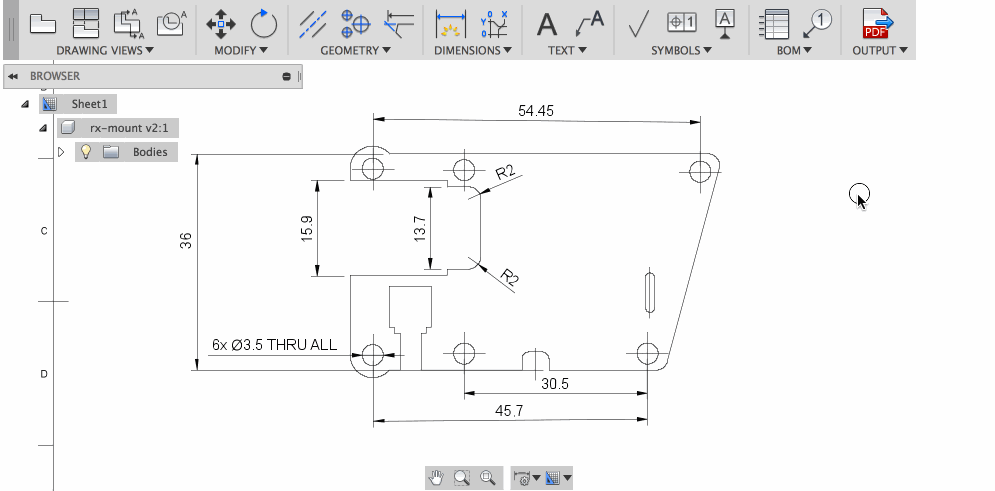
Edge extensions are helpful if you want to easily visualize where the intersection is between 2 lines, so that if you want to put a dimension between 2 intersections, you can easily snap to them. Also they just look cool on your drawings.
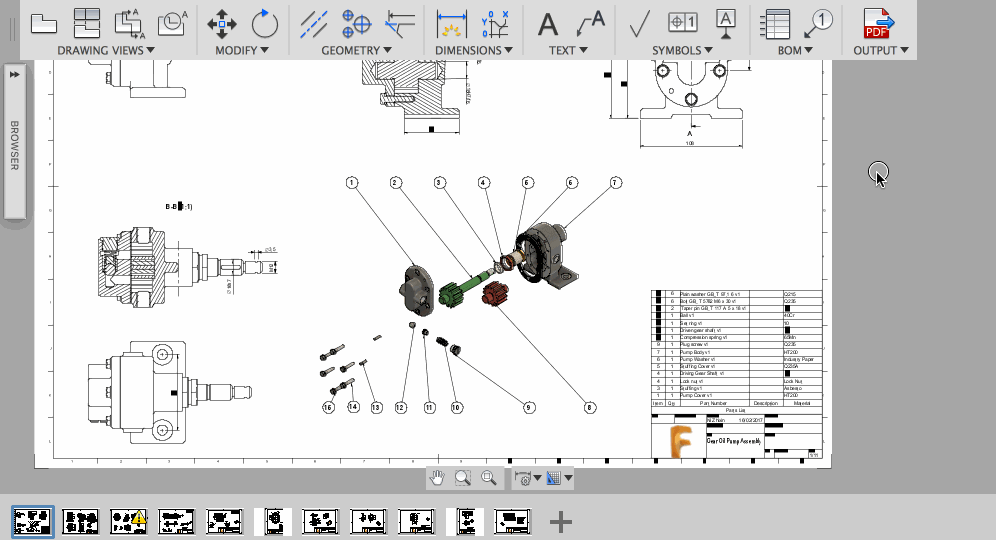
Now when you’re exporting your multi-sheet drawings as PDF, you can get enter a specific range of sheets to output. Under the Sheets drop-down menu, Select Range and enter the sheets you want to be included.
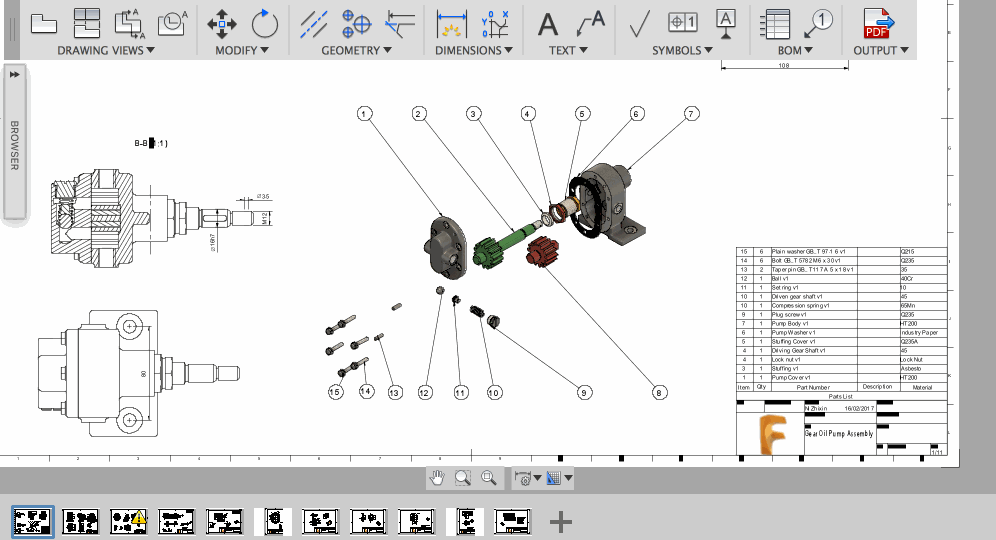
Another way to do this is by selecting the sheets themselves (CMD + click for Mac or CTRL + click for Windows) and then right-clicking on the selection to get Output PDF.

Hooray! This has been much discussed and highly requested. Sometimes when you output your drawing as PDF, there are lines that are way too thick. Now, you have the (much needed) option to turn on/off line weights, so your lines on your exported PDF have a thinner line weight. Winning.
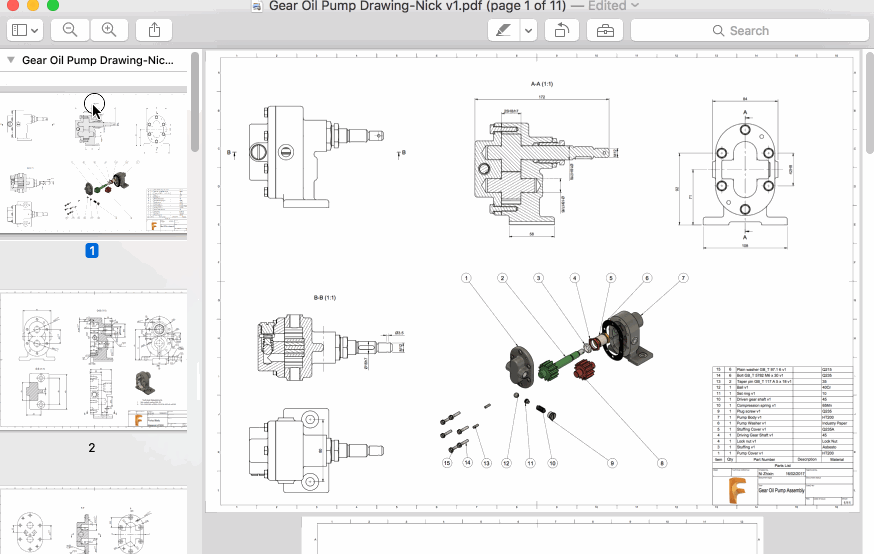

Previously if you had multiple callouts on a group of components, you had to renumber them individually, which can be a huge time-suck. Now when you select one of those balloons to renumber, the Renumber Balloons tool will automatically highlight all other balloons on the drawing with same item number. This makes sure that you don’t miss out on any balloon while re-numbering all your balloons.
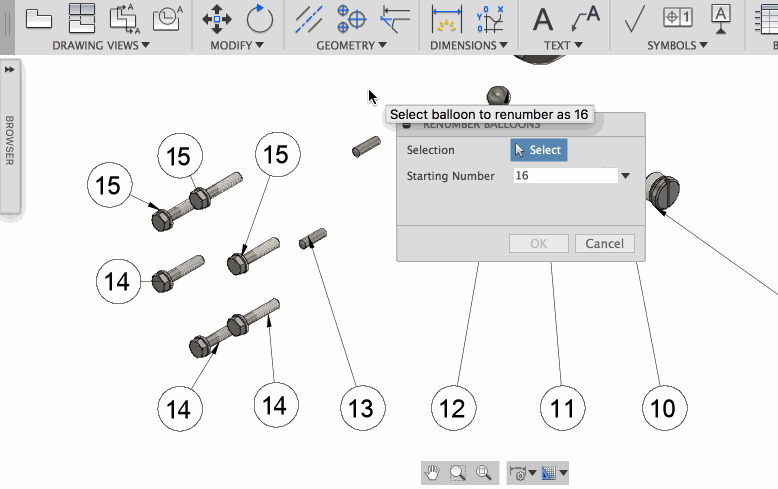
We are adding more and more people in the sheet metal preview workspace everyday, and have made progress on some core sheet metal functionality, extending its capabilities into the 2D Drawings workspace.

You can now create flat patterns of your sheetmetal designs! Access it under the Modify drop-down menu in your sheet metal preview workspace. We made a recent post about it that dives deeper into the details, so be sure to check it out!
Make sure to watch the video to see all these enhancements in action!!!
As always, we look forward to hearing about your experiences with this update. Cheers and get cracking!
Keqing and the Fusion 360 team
By clicking subscribe, I agree to receive the Fusion newsletter and acknowledge the Autodesk Privacy Statement.
Success!
May we collect and use your data?
Learn more about the Third Party Services we use and our Privacy Statement.May we collect and use your data to tailor your experience?
Explore the benefits of a customized experience by managing your privacy settings for this site or visit our Privacy Statement to learn more about your options.